In today’s digital landscape, web APIs are the unsung heroes powering the seamless experiences we often take for granted. Imagine trying to order a pizza without the magic of an API to connect your favorite app to the restaurant’s system. It’d be like trying to use a rotary phone in a smartphone world—frustrating and oh-so-slow.
Table of Contents
ToggleOverview of Web APIs
Web APIs act as intermediaries that enable different software applications to communicate effectively. These interfaces simplify the exchange of data across systems and platforms, playing a significant role in modern web development.
Web APIs provide essential functionalities that facilitate various operations like retrieving data, submitting forms, and managing user authentication. Developers leverage these APIs to access services from platforms like Twitter, Google Maps, and payment gateways, ensuring integration efficiencies.
REST and SOAP represent two prominent web API architectures. REST APIs focus on simplicity and use standard HTTP methods, making it easier for developers to interact with web services. On the other hand, SOAP APIs rely on XML for message formatting, offering built-in error handling and security features.
Documentation forms a crucial aspect of web APIs. Clear documentation allows developers to understand endpoints, request formats, and response structures, reducing integration time and errors. API providers often include examples, making it more accessible for developers to implement functionalities.
Security measures are vital when using web APIs. Authentication protocols such as OAuth allow applications to access resources securely without exposing sensitive information. Implementing HTTPS protects data during transmission, ensuring safe interactions between client and server.
Web APIs contribute to the growth of the digital ecosystem. They facilitate integrations that enhance user experiences, allowing applications to function seamlessly together. As their importance continues to grow, understanding web APIs remains critical for developers navigating today’s tech landscape.
Types of Web APIs
Web APIs come in various forms, each serving distinct purposes in the digital landscape.
Open APIs
Open APIs, sometimes called public APIs, are accessible to developers without restrictions. They facilitate innovation by allowing third-party apps to interact freely with core services. Companies like Twitter and Google offer open APIs, inviting external developers to create new applications. This openness fosters collaboration and enhances user experience by integrating different functionalities seamlessly. Furthermore, anyone can use these APIs for diverse projects, significantly expanding their reach and utility.
Internal APIs
Internal APIs serve as private interfaces within an organization. They enable communication between internal systems, improving application efficiency and productivity. Teams leverage internal APIs to streamline processes, share databases, and implement automation comfortably. These APIs often adhere to organization-specific standards, enhancing security and control over data access. Organizations benefit significantly from this structure by reducing redundancy and promoting collaboration among departments.
Partner APIs
Partner APIs are designed for specific third-party partners, restricting access to selected users. These APIs facilitate integrations that benefit both parties, maintaining a balance of control and collaboration. For example, a partnership between a payment gateway and an e-commerce platform can utilize a partner API to streamline transactions. This controlled access ensures security while enhancing services available to mutual customers. Engaging through such APIs often leads to tailored solutions that satisfy specific business needs.
Benefits of Using Web APIs
Web APIs provide numerous advantages in today’s digital landscape. They enhance operation, streamline processes, and foster innovation across various platforms.
Enhanced Functionality
Web APIs expand the capabilities of applications. They allow developers to integrate powerful services, such as those from social media platforms. Utilizing APIs enables seamless communication with existing software, improving user experiences through enriched features. For instance, apps can pull data from services like Google Maps to enhance location functionalities. Leveraging APIs allows for the incorporation of third-party tools that can handle complex tasks, ultimately providing users with a comprehensive experience.
Improved Efficiency
Efficiency increases significantly with the use of web APIs. Developers can utilize pre-built functionalities rather than creating everything from scratch. This practice reduces development time and costs, allowing teams to focus on core project goals. APIs also provide easy access to services, streamlining workflows. For instance, payment gateways simplify transactions, enabling businesses to implement robust payment solutions quickly. By connecting to internal systems through Private APIs, organizations enhance operational collaboration and reduce redundancy across teams.
Challenges in Implementing Web APIs
Implementing web APIs poses several challenges that developers must navigate. Effective management of these hurdles ensures smoother integration and enhanced usability.
Security Concerns
Security concerns pose a significant challenge in API implementation. Unauthorized access can result in data breaches, leading to financial loss and reputational damage. Developers must implement robust security measures, including OAuth for authentication and HTTPS for data encryption. API endpoints require strict validations to manage input data effectively. Implementing rate limiting can also protect against abuse, ensuring systems remain functional under heavy loads. Regular security audits help identify vulnerabilities, making it easier to maintain a secure environment.
Versioning Issues
Versioning issues frequently arise during API development. Developers must manage multiple versions of APIs to accommodate changes without disrupting existing services. Maintaining backward compatibility is crucial for preventing disruptions for users relying on older API versions. Clear documentation becomes essential, making it easy for users to transition between versions. Designers should consider establishing a versioning strategy, such as URI versioning or query string parameters, to ensure smooth upgrades. Addressing these challenges contributes to a stable and user-friendly API ecosystem.
Best Practices for Web API Development
Developers should prioritize clear and concise documentation. Good documentation simplifies understanding API endpoints and reduces integration errors. Emphasizing uniformity in naming conventions aids developers in navigating APIs more easily.
Security measures require significant attention. Implementing OAuth for authorization and HTTPS for data encryption protects sensitive information during transactions. Additionally, rate limiting prevents abuse and ensures fair usage.
Version control plays a vital role in maintaining API stability. Establishing a thoughtful versioning strategy allows developers to accommodate changes without disrupting existing users. Maintaining backward compatibility helps ensure that older versions continue to function smoothly.
Moreover, using consistent error handling ensures users receive clear feedback. Returning informative error messages helps developers troubleshoot quickly, improving overall user experience. Integrating standardized HTTP status codes aids in conveying the status of requests effectively.
Testing APIs thoroughly remains essential before deployment. Conducting unit tests, integration tests, and performance tests uncovers potential issues early in the development cycle. These testing practices help ensure that the API performs reliably under various conditions.
Implementing API monitoring tools can track performance in real-time. This practice identifies issues proactively, allowing for prompt resolutions before they impact users. Regularly reviewing usage analytics provides insights into how developers engage with the API.
Engaging with the developer community fosters collaboration and feedback. Encouraging users to report bugs or suggest improvements enhances the overall API quality. Building a support forum or utilizing platforms like GitHub ensures users can easily communicate their experiences and receive assistance.
Conclusion
Web APIs are indispensable in today’s digital world. They enable seamless communication between applications and enhance user experiences across various platforms. By understanding the different types of APIs and their functionalities, developers can leverage these tools to streamline processes and foster innovation.
The challenges associated with web APIs, particularly regarding security and versioning, require careful attention. Adopting best practices in API development ensures reliability and user satisfaction. As technology continues to evolve, mastering web APIs will remain crucial for developers aiming to create efficient and effective digital solutions. Embracing this knowledge will empower them to navigate the complexities of modern web development successfully.




